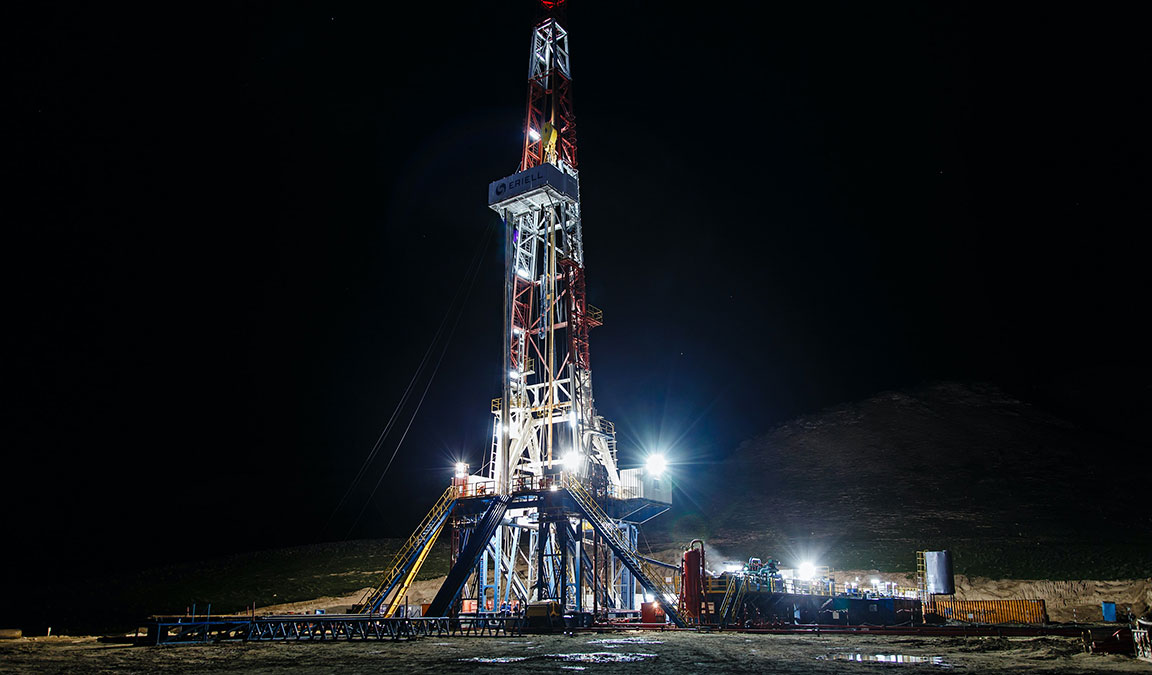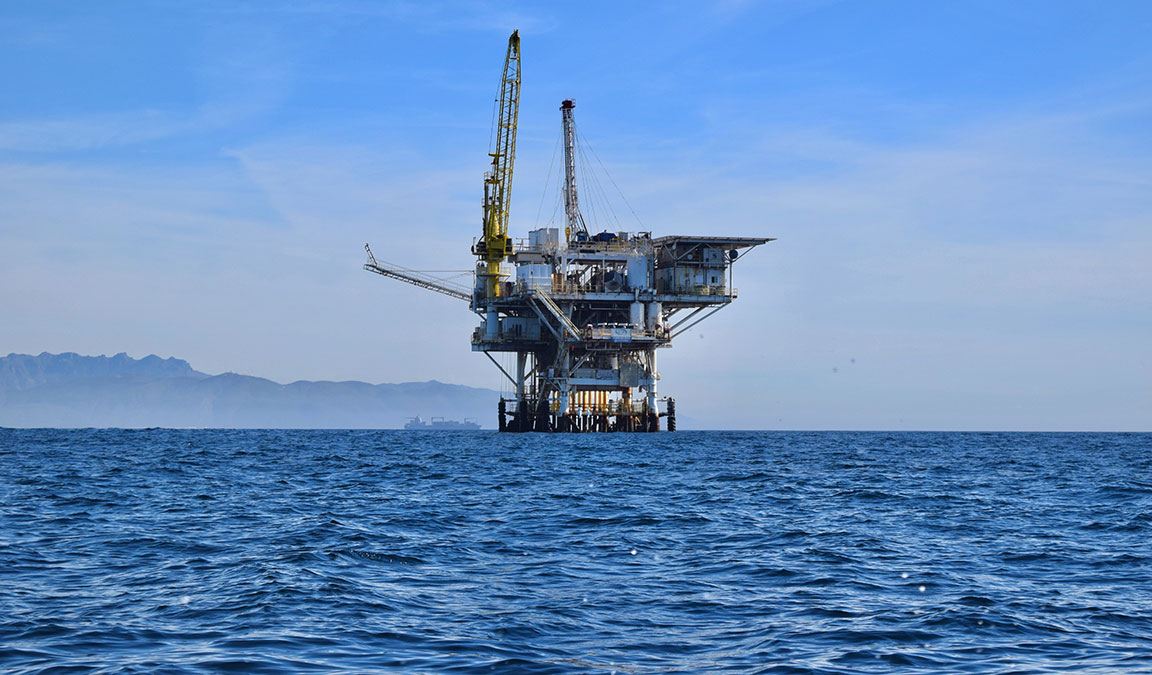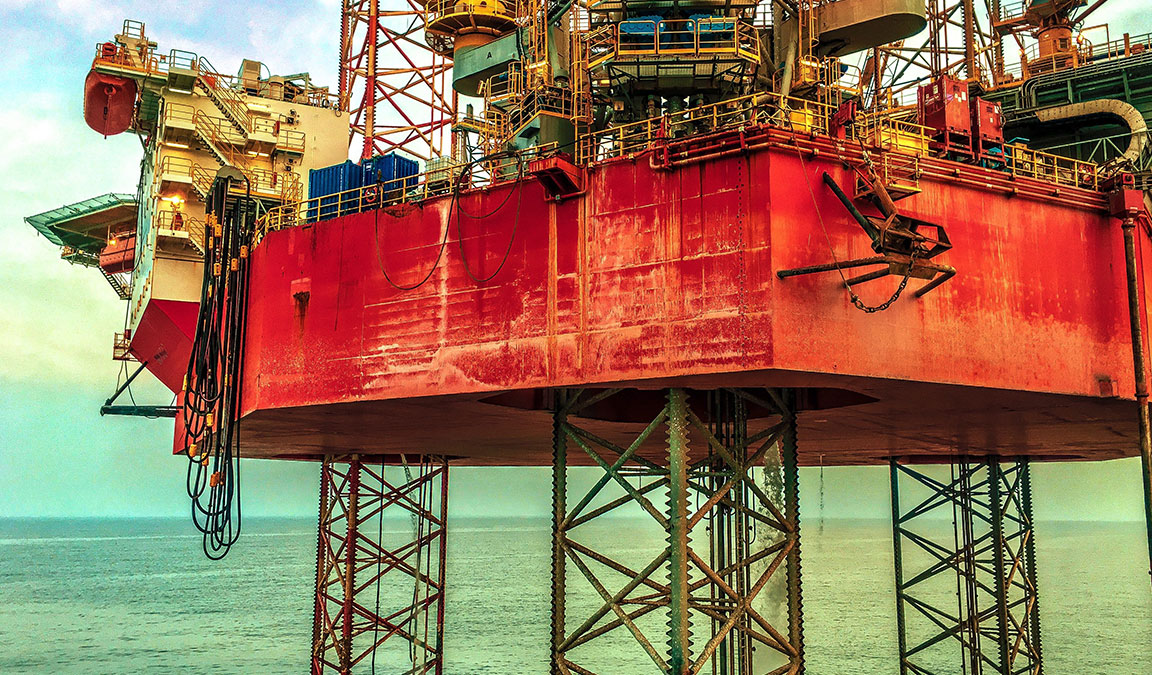There are those who spend their childhood dreaming of becoming a footballer or an Oscar-winning movie star. And then there are those who move to a different beat. In 2021, there are more career options than ever before. And one of the most rewarding – but lesser known – is that of a wellsite geologist. Anything but a nine to five occupation, it’s not for the faint hearted.
We take a look at what the job of a wellsite geologist involves, the salary and benefits and what it’s like to be a woman on the rig.
But what does a wellsite geologist do exactly?
A wellsite geologist is essentially a highly skilled project manager on a gas or oil rig who makes things happen. A high-pressured role, from start to finish, a wellsite geologist is an integral part of the drilling and geological data gathering process: from picking casing and coring points, and interpreting data to collecting and analysing samples of material taken from the well, and reporting back to the on and offshore teams via detailed logs and reports.
Often working in isolated parts of the world, the job gives new meaning to the term remote working, as it involves spending large chunks of time away from friends and family, and working long, unsociable hours.
Intrigued? Let’s deep dive into the detail.
Wellsite geologist responsibilities
A wellsite geologist is often present as soon as a well is spud (drilled) and is on hand to study and analyse samples of rock as the work progresses.
What does a wellsite geologist do every day? Well, in terms of specific tasks, on a daily basis, a wellsite geologist is responsible for:
- Examining samples: Samples produced from the drilling are analysed for rock type to determine progress through the formations.
- Admin: Hate paperwork? You’re out of luck. There’s a lot of admin involved in the role, including producing detailed logs several times a day of the drilling and geological progress, recording samples, analysing and Qc’ing data (quality control) and any other events or findings relating to the project. There are also daily reports to write and pass on to the onshore and offshore teams.
- Onsite health and safety: A rig is a dangerous place to work. The wellsite geologist is responsible for ensuring safe sample collection, safe coring procedures and transportation, and ultimately like all others, ensuring each person is working in a safe manner.
- Supervision of the data engineers and mudloggers: A mudlogger plays a key role on the rig, detailing the activity at the well, including the drill cutting rates and speeds, timings, drilling depths and the characteristics of the gas, as well as tracking the volumes of the mud on the surface and in the wellbore.
All in a day’s work
Before we move on to how to get a job as a wellsite geologist, let’s look at the duties and daily activities of a single wellsite geologist at the rigsite.
04:30: Up and at ‘em.
05:00: Review of the previous night’s work, including any safety issues and a rundown of the objectives of the shift ahead.
05:15: Arrive at the mudlogging unit to look at samples collected during the night shift and discuss any issues with data quality with the mudloggers.
05:45: Review of the data gathered during the night and updating any lithological/composite logs and daily reports for the daily data package to be sent onshore.
07:00: Submit the daily geological report and have breakfast. For the next few hours duties include attending rig daily activity/safety briefings, talking directly to the operations geologist regarding the previous night’s geology and data, and preparing for the daily multidisciplinary morning meeting with the onshore oil company and contractor representatives, while continuously monitoring the well for significant changes in geology, gas, fluid volumes etc.
09:00: Breathe! Quick check of the LWD (logging while drilling) curves and compare to offset logs, before heading back outside to the mudlogging unit to check the latest samples.
12:00: Lunchtime is often a moveable feast, eaten on site, unless activities dictate otherwise. Maybe a quick sleep afterwards if woken up the previous night.
14:00: Time to gather all the data collected during the morning and prepare for the afternoon’s data package to be sent onshore.
15:00: Send updated data package and have an afternoon call with the operations geologist to discuss the morning’s geology and the drilling forecast for the evening.
16:00: Afternoon multidisciplinary meeting with the onshore team to discuss the drilling and geology and any issues effecting the drilling progress.
18:00: Dinner time.
19:00: Evening activity/safety meeting.
19.30: Back outside to the mudlogging unit to analyse latest samples and discuss drilling progress with mudloggers. Great time to let them know if changes are expected during the night and under what circumstances to wake you up if needed.
20:00: Update logs and reports as much as possible.
21:00: Go to bed, and be ready to do it all again tomorrow.

What do wellsite geologists earn?
We’ve answered the question, what does a wellsite geologist do. Now let’s talk about money.
The starting salary for this highly skilled role used to range from £25,000 and £40,000 a year, rising to £120,000 for an experienced professional. But as most wellsite geologists are paid by the day and since the oil crash in 2014, the amount of work available has been greatly affected. Pre-2014, day rates were around £800-£1000 per day. However, they’ve been reduced considerably since then, with operators cutting costs significantly while expecting the same level of experience and work volume.
A shore thing
The money may be appealing but the work is hard, the environment is unforgiving, and the hours are long. Typically, a wellsite geologist works 12-16 hours a day for two weeks followed by a two week break onshore. You can also work in some pretty inhospitable conditions. Wherever you’re based, you can look forward to being battered by the elements, as well as living with constant noise and dirt. What’s not to like?
How to get started as a wellsite geologist
Securing a job as a wellsite geologist requires a whole toolbox of qualifications, experience and soft and hard skills. A degree in geology is usually the best way to get your foot in the door.
In addition to a degree, you’ll need a whole load of soft skills, including:
- Great oral and written communication skills
- Strong leadership and supervision skills
- Technical know-how, including experience handling some pretty sophisticated equipment
- Strong decision-making skills
- The ability to work alone and under pressure
Specialist agencies for wellsite geologists
Looking for a career as a wellsite geologist? As mentioned, you’ll need a degree and, for the best chance of success, some experience as a mudlogger or data engineer under your belt.
Once you’ve got all this locked down, it’s time to look for work.
A specialist field requires a specialist recruiter. Thankfully, there are a few niche agencies out there that can help you find a wellsite geologist contract. Any of these international sites are a good place to start:
Resources like these are fantastic if you’re starting out, but other experienced wellsite geologists are often more useful in helping you get a foot in the door if you have the right skill set.
An exceptional wellsite geologist’s reputation will proceed them, as well as a mediocre one, as the industry is relatively niche and word travels fast. So it’s important to make a good impression on everyone you meet. As you get more experienced, this industry is all about who you know, so it’s vital you not only produce quality work but that you’re also able to get along with others.
The highs and challenges of being a wellsite geologist
The role of a wellsite geologist can be incredibly rewarding, but it comes with a lot of responsibility.
The Highs
- The salary: This can be a lucrative career path, with highly experienced personnel commanding around £120,000 per year.
- Passion: If poking around in rock samples gives you a thrill, this will be a remarkably rewarding career.
- Longevity: Wellsite geologists will always be needed, so the role is unlikely to become obsolete. Even with the energy transition, the skillset can be useful to green energy form such as geothermal.
- Travel: Wellsite geologists get to see remote parts of the world which are usually off limits to mere mortals.
- Time off: Excellent work life balance with anything from 100-180 days worked offshore per year and the rest of the time off to do as you please.
The Challenges
- Long hours: Wellsite geologists are expected to work over 12 hour days, often in difficult conditions. For this reason, the job can be physically and mentally exhausting.
- Far from home: You need to get used to being away from friends and family for long periods at a time and often without a reliable internet connection.
- Job security: Wellsite geologists are usually hired as contractors, so there can be, especially in recent times, long periods with little or no work available. Saving your earnings for lean times is essential.
- Privacy: During a project, don’t expect too much in the way of ‘me time’. Sleeping arrangements include bunk beds and having to put up with snoring from adjacent rooms. You’ll be spending 24 hours a day in the company of your colleagues even if you don’t always get along.

Lady Drillers
As well as being asked what does a wellsite geologist do, we’re often asked what’s it like to work on an oil rig as a woman?
In our brave new world, nothing is off limits for womenfolk and more and more women are embarking on careers which have been traditionally seen as male orientated. There are still relatively few female wellsite geologists in the field, with a recent study conducted in 2017 by Tim Herrett for the Geological Society Operational Geoscience Conference, showing that only 7% of the 278 respondents were female. The full study can be accessed here: Wellsite Geology Survey.
Sudanese-Australian writer, engineer and award-winning social advocate, Yassmin Abdel-Magied is the author of two books, and also the founder of social project, Youth Without Borders.
Before becoming a writer and broadcaster, Yassmin spent a few years working on oil and gas rigs as one of very few female engineers. Yassmin says of her experience, ‘like anything, working as a female in a male-dominated industry is challenging, difficult, fun, rewarding, unexpected and above all, completely subjective. As you would expect, it’s a mixed bag when it comes to the experience of being a woman in a man’s world. Often, younger men are accepting, while older men take up the role of ‘teacher’. She continues, ‘if you’re the kind of gal who likes to work 9 to 5 before heading off for cocktails with the girls, this role is not for you. If, however, you don’t mind getting down and dirty, and have a passion for rocks and mud, this could be the career you’ve been looking for.’
Wellsite Geological’s Kim Mair has worked in the industry for 20 years and can relate to this. When she first started there were few women in the science departments offshore and unfortunately frequent sexist or derogatory remarks were not uncommon. However, in the past decade or more, with an increase in women working offshore, this attitude has changed for the better with women being accepted as part of the team and those with a ‘women should be chained to the kitchen sink’ attitude long gone. Today, you can find a female somewhere doing pretty much every role there is offshore, with oil companies keen to promote a more inclusive workforce based on competence regardless of sex.
But despite the industry actively employing more women, there may well only be a handful of women on a rig, with over 100 men on board. That’s a lot of testosterone.
So what’s it really like? Let’s delve into the realities of being a woman on an oil rig.
Firstly, calling in sick is generally not an option unless it’s a medical emergency. There is a medic onboard and they should always be the first port of call for any health-related issue. However, when you are doubled over with cramps not much can be done about that in such a remote location. The work still needs to be produced to the same high standard irrespective of how you’re feeling. It makes for a challenging time when you’re not 100% and just want to lie down with a hot water bottle. But the show must go on!
Wellsite geologist duties are an integral part of any drilling project as they’re working to constant deadlines. So, unfortunately, you need to land sunny side up each morning, even if you’re feeling under the weather.
Secondly, one of the first casualties of your career may be your relationship. In many cases, being apart for huge amounts of time with limited communication can be the death knell for even the strongest of relationships. Similarly, you need to be prepared for the fact that, should a loved one back home fall sick or your partner gives birth, you may not be able to be with them immediately. And, depending on your location, it could be a few days before you’re able to return home, even with the most compassionate of clients.
Still want to be a wellsite geologist?
A career as a wellsite geologist is stressful, unsociable and holds very little in the way of glamour and glory. It can also take a serious toll on personal relationships. Throw in long hours, shared accommodation, extreme weather, and you can see why this is not a job for everyone.
On the upside, you get to use all those specialist skills you studied so long to acquire, and you save money as there’s no nightlife to speak of. You also get to see the geology beneath your feet and be the first person to look at rocks that have been buried for up to 250 million years.


